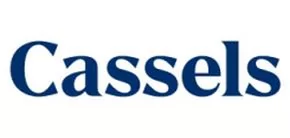- within Food, Drugs, Healthcare and Life Sciences topic(s)
- with Senior Company Executives, HR and Inhouse Counsel
- with readers working within the Business & Consumer Services, Healthcare and Transport industries
The use of AI in preparation of court materials is in the news again with a recent set of Ontario Superior Court of Justice decisions offering a cautionary tale to counsel using AI tools. In Ko v Li, 2025 ONSC 2766 and Ko v Li, 2025 ONSC 2965, a Toronto lawyer was ordered to show cause for why she should not be cited for contempt of court for including AI-generated fake or misleading case citations in her written and oral submissions to the Court.
In her factum filed in support of a family law motion, counsel referenced several cases that could not be retrieved by a search on any caselaw publication service. Counsel relied on two of these cases in her oral arguments, and the Court discovered that the links provided for them were either not operable or directed to different cases.1
The Motion Decision
Following the Court's discovery of the invalid hyperlinks, it became clear that the factum may have been created by a generative AI platform – which are known to produce false or misleading case citations commonly referred to as "hallucinations" – and not checked over by counsel before it was submitted. Justice Myers emphasized the duty of lawyers to the court, their clients and the administration of justice, which includes human review of materials prepared by AI.2 Clearly, lawyers should read cases before relying on them, and at minimum make sure they exist.3
Given the gravity of her error, counsel was ordered to return for a show cause hearing to argue why she should not be cited for contempt of court, a finding that could potentially carry serious penal consequences including fines and, in some cases, incarceration.
The Court made note of a similar case from British Columbia, Zhang v Chen, 2024 BCSC 285. In Zhang, counsel relied on two fictitious precedents in their factum. The error was caught by opposing counsel, and the factum was subsequently withdrawn prior to the hearing.4 In that case, elevated costs were awarded to compensate for the additional effort and expense incurred by the inclusion of the hallucinated cases.5 Opposing counsel questioned whether it was an honest error, given the recent guidance from the Law Society and similar highly publicized cases in the United States, but stopped short of asserting dishonesty.6 The BC Court stated in Zhang that AI is no substitute for the expertise of lawyers, and that use of these tools must be critical and competent.7
The Contempt Decision
At an informal scheduling conference on May 16, 2025, counsel was forthright in admitting her error and provided an explanation. She went on to apologize and propose steps to address the issue going forward.8 In a written decision released on May 20, 2025, the Court found it unnecessary to continue with contempt proceedings, given that counsel had admitted her error and thrown herself at the mercy of the Court.9 The Court also acknowledged the denunciation and deterrent effect of "a public shaming near the end of an unblemished career."10
Notably, the Court also provided notice to counsel about her failure to comply with the Rules of Civil Procedure, RRO 1990 Reg 194. Rule 4.06.1 (2.1) was enacted in 2024 to combat the rise of AI "hallucinations" and states:
A factum shall include a statement signed by the party's lawyer, or on the lawyer's behalf by someone the lawyer has specifically authorized, certifying that the person signing the statement is satisfied as to the authenticity of every authority cited in the factum.
This rule underscores counsel's "obligation to check the cases cited in their legal briefs to ensure they are authentic."11
The Court also highlighted the duty to protect the fairness of the process, despite the role of counsel as zealous advocates in an adversarial system. Lawyers are required to:
- cite the law fairly;
- not misrepresent the law;
- and advise the Court of cases that oppose their clients' positions.12
The Law Society of Ontario has issued practice guidelines on AI, as have the Law Societies in British Columbia, Alberta, Saskatchewan, Manitoba, and Nova Scotia.
Key Takeaways
As the Court rightly noted in Ko, "AI is ubiquitous and yet its risks and weaknesses are not yet universally understood." As AI continues to become more prevalent in legal practice and society, awareness of the risks associated with using AI and the rules and directives implemented to curb those risks will be essential to safeguard more than just the reputation of counsel. It is also needed to protect the integrity and fairness of litigation and the administration of justice at large.
The Ko decisions send a clear message to lawyers:
- Citations for contempt of court are available for irresponsible use of AI.
- There is an obligation to certify the authenticity of every authority cited within factums, pursuant to Rule 06.1 (2.1).
- Costs associated with AI hallucinations – including research, factum writing and court attendance – may fall to counsel.
Footnotes
1. Ko v. Li, 2025 ONSC 2766 (Ko v Li) at paras. 5 & 6.
2. Ko v Li at para. 20.
3. Ko v Li at para.
4. Zhang v Chen, 2024 BCSC 285 (Zhang v Chen) at para. 3.
5. Zhang v Chen at para. 43.
6. Zhang v Chen at para. 27 & 28.
7. Zhang v Chen at para. 46.
8. Ko v. Li, 2025 ONSC 2965 (Ko v Li Contempt Decision) at para. 8.
9. Ko v Li Contempt Decision at para. 56.
10. Ko v Li Contempt Decision at para. 73.
11. Ko v Li Contempt Decision at para. 33.
12. Ko v Li Contempt Decision para. 31.
The content of this article is intended to provide a general guide to the subject matter. Specialist advice should be sought about your specific circumstances.




